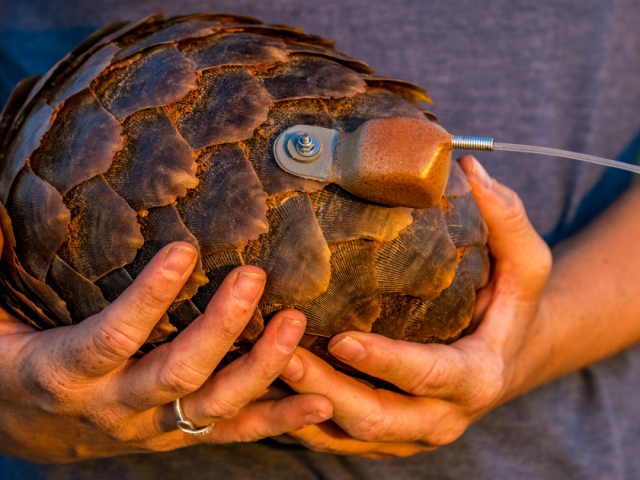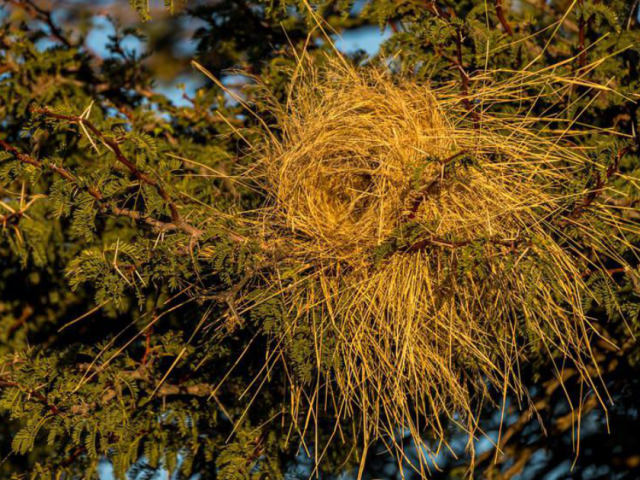“Why is Africa not producing more carbon credits?” asked Matthew Child of Rewild Capital during a panel discussion at COP28 in Dubai on restoring ecosystems and boosting wildlife economies.
The panel was hosted by Oppenheimer Generations Research and Conservation at the South African Pavilion at Expo City on Wednesday, December 6.
The panel consisted of OGRC head Duncan MacFadyen, Max Makuvise, resident director at Shangani Holistic in Zimbabwe, and Matthew Child from the SA National Biodiversity Institute and founder of Rewild Capital company.
All three speakers emphasised the importance of rangelands in preserving and rehabilitating biodiversity across Africa. Rewild Capital argues that “healthy soil is a major carbon pool but over 70% of African rangelands are degraded. Restoring these landscapes will be a potent weapon in the fight against climate change.” Furthermore “carbon finance is a catalyst in creating inclusive nature-based economies across Africa. Rewilded lands are more resilient to environmental and economic shocks, which helps protect local communities against the impacts of climate change.”
One of the reasons Africa does not produce more carbon credits, said Child, is that it is expensive, with substantial investment capital needed.
Child said Africa-led solutions are not currently reflected in the voluntary carbon market, and believes it is possible to ramp up high-integrity carbon credits in Africa because of the continent’s rich resources in biodiversity and indigenous knowledge.
Child said there is a lot of policy support to restore land into working landscapes that allow people to make livings. “However, the costs of doing this restoration are exorbitant. Carbon credits can be used to help landowners and communities overcome the opportunity costs of doing sustainable land management. Unfortunately what we have in Africa at the moment is that most of the credits that have been issued are from avoided emissions projects, which is above-ground biomass, forest conservation. While that is applicable in some areas, planting trees in savannas can undermine biodiversity and reduce the capacity of that system to promote inclusive livelihoods. It can also incentivise bush encroachment which is a major degradation problem in rangelands.”
“What is the solution? We have to ramp up the other asset class of carbon credits, which is soil carbon credits, which sequester additional carbon from the atmosphere. They are compatible with grazing systems based on herbivore production, and they are long-term carbon stores in savannas. If fire wipes out your above-ground stocks, if you’ve managed your rangeland successfully, that sequestered carbon is safe in the soil.
“Africa has a superpower in having huge amounts of biodiversity, rangelands, ecosystems and wildlife. The science shows us that when we rewild these rangelands soil carbon stocks increase compared to livestock-only systems. The ecological functions of wildlife can help process nutrients and store additional carbon in the soils.
“Rewilding also means, not just adding wildlife to a system, it also means restoring ecological processes. In Africa this is normally driven by the combination of grazing and fire. When you move from a continuous grazing system to some form of rotational grazing system that mimics the natural grazing patterns that we used to have and allows the grass to recover, that can also radically increase soil carbon sequestration.
“You don’t have to separate out cattle and wildlife. They can exist on the same piece of land. This should be Africa’s solution to sustainable development, which also leads to the possibility of regenerative agriculture, wildlife economies such as ecotourism. That is why we say that rewilded rangeland credits should be a premium credit class to be sold on the international market, and we need to do the work to show the world we can have a triple bottomline solution: carbon mitigation, biodiversity conservation and sustainable livelihoods beyond the carbon projects.”
Makuvise noted that often when people talk about rewilding they mean reforestation. “Why do we want to plant trees on the African savanna where we never had trees in the first place?”
Shangani consists of 65000 hectares with no internal fences “where we have wildlife, cattle and humans living in harmony”, said Makuvise. “About 600 metres from my house I have a resident leopard. It doesn’t interfere with me, I don’t interfere with it. It’s not eating our cattle, there are enough impala to go around.
Makuvise said they are trying to understand the interaction between cattle, people and wildlife, and then take that understanding out into especially rural areas. “We also have 300 to 400 migrating male elephants coming through the farm every year. They come past us, we go past them, we don’t interfere. We try to understand how this works so we can educate the surrounding villages.
“At the ranch we practice holistic management with our cattle. We look at what works for us in our environment. It’s not about following a textbook. Rewild Capital allows us to measure what we do. Having a research department makes us different from other cattle farms in that we can monitor our vegetation: what are the cattle doing to the grass, what are the wildlife doing to the grass, is bush encroachment an issue? “
Makuvise emphasised the need to create a self-sustainable economy, and made the case for using indigenous breeds for the export market in beef. He added that “the mixed model can be exported. It works within existing systems. It improves production. Carbon credits can be used. And wildlife tolerance in communities can be increased. If you can live in harmony with cattle and wildlife it reduces stress. Understand that our ancestors lived with them. The richness of our model gives us a headstart in Africa, and the carbon money should go back into people and infrastructure.”
MacFadyen emphasised that “wildlife needs to pay for itself. It must never get to the point where it’s people or the environment. It has to be people and the environment. The development of inclusive wildlife economies across Africa needs to be done. What’s exciting about Rewild is that they are working with communities, rewilding areas, brokering carbon credits and ploughing that money back into those communities.”
MacFadyen said OGRC has many partners, such as Future Ecosystems for Africa and the African Wildlife Economies Institute, which run programmes to help understand the risks and mitigation of climate change across Africa with science. “We know the impact of climate change will be felt most in the hotter, dryer areas, and “some animals on physiological edge of their means of adapting to climate change. Some species will be pushed to extinction. Climate change is a real threat.”
Watch a recording of this panel discussion here.
Yves Vanderhaeghen is a member of the Oppenheimer Generations Research and Conservation delegation to COP28. He writes for Jive Media Africa, science communication partner for OGRC.
Author
- Tracking the Shangani Wanderer - June 18, 2025
- Rescue, rehabilitate, release: tracking the comeback of South Africa’s pangolins - June 18, 2025
- Fewer weavers, fewer homes: why nest builders matter in the Kalahari - June 17, 2025
Additional News
Pangolins are elusive and heavily trafficked. At Tswalu, researchers are working to uncover their secrets and aid conservation.
Declining Sparrow-Weavers may threaten other birds that rely on their old nests for shelter.





